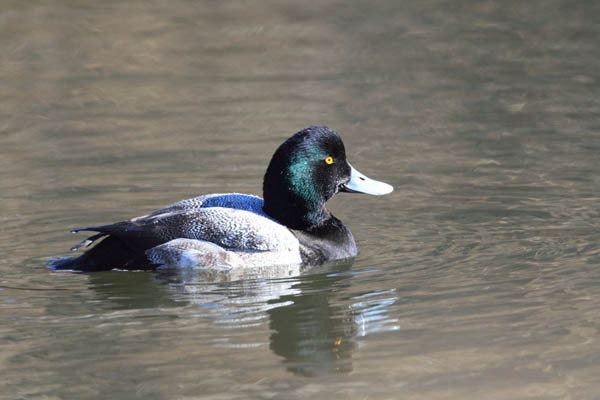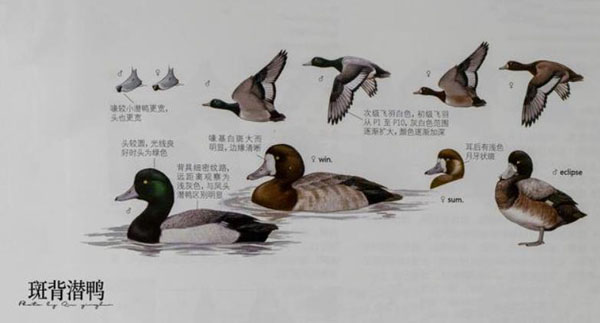Aythya marila
IUCN
LCBasic Information
Scientific classification
- name:Aythya marila
- Scientific Name:Bell duck, Oriental clam duck,Aythya marila,Greater Scaup,Scaup
- Outline:Waterfowl
- Family:Anseriformes Anatidae Duckling
Vital signs
- length:42-47cm
- Weight:750-1350g
- lifetime:6-8years
Feature
There is no crest, and there is a wide white ring at the base of the beak.
Distribution and Habitat
In China, it is found in central China, eastern China, southern China, Sichuan and Taiwan Island in winter. Abroad, it breeds in the circum-Arctic region of the Holarctic and hibernates in the coastal areas in the southern part of the Holarctic.
In the breeding season, it mainly inhabits the Arctic tundra, tundra forest and the open taiga forest in northern Siberia. It often moves in freshwater lakes, rivers, ponds and swamps rich in plant growth. In winter, it mainly inhabits and moves in shallow waters near the coast, estuaries, bays, inland lakes, reservoirs and swamps.
Appearance
The male has a stout body, black head, neck, chest and tail, a round and swollen head with a dark green luster, a white back with wavy dark brown fine lines, forming a "spotted back", and white lower abdomen, flanks and wing mirrors. The female is brown, with lighter brown on the flanks, a wide white ring at the base of the beak, and white wing mirrors and lower abdomen, similar to the Crested Pochard but without a crest. The iris is yellowish white, the beak is lead gray with a black tip, and the feet are lead gray.
Details
The Spotted Duck is a migratory bird. It begins to migrate to China for wintering in early October every autumn and leaves in early April to early May in spring. It moves in pairs during the breeding season and in groups during the non-breeding season. Sometimes it also moves in mixed groups with other diving ducks. It is good at swimming and diving. When taking off, it needs to flap its wings rapidly on the water surface and run on the water for a while before it can fly. The movements appear clumsy, but the flight is fast and powerful.

It mainly feeds on aquatic animals such as crustaceans, mollusks, aquatic insects, small fish, etc. It also eats algae, aquatic plant leaves, stems, seeds, etc. It mainly forages by diving. The diving depth is usually 2-3 meters. It usually forages during the day. When resting, it often wanders in groups on the sea or lake, or floats motionlessly on the water and drifts with the waves.

The breeding season is from May to July. Usually they form pairs in late winter and often arrive at the breeding ground in pairs. They build nests on dry land outside lakes or rivers, usually close to the water. The nests are mostly placed on the ground next to dead grass or fresh grass, or under small willows and shrubs. The nests are well hidden. They are usually made of dead grass and padded with down feathers. Each nest lays 7-10 eggs. Usually one egg per day. The eggs are gray-olive or brown, with a size of 54.5-68.1×40.7-48 mm; an average of 62.7×71.5 mm, and weigh 57-72.5 grams, with an average of 60.7 grams. Incubation begins just after the first egg is laid. The female bird is responsible for incubation. The incubation period is 27-28 days. The male bird leaves the female bird after the female bird starts incubating the eggs and gathers with other flocks of birds at the waterside to molt. The chicks are female and will follow their parents soon after hatching. After about 40-50 days of chick life under the guidance of their parents, they will be able to fly.









